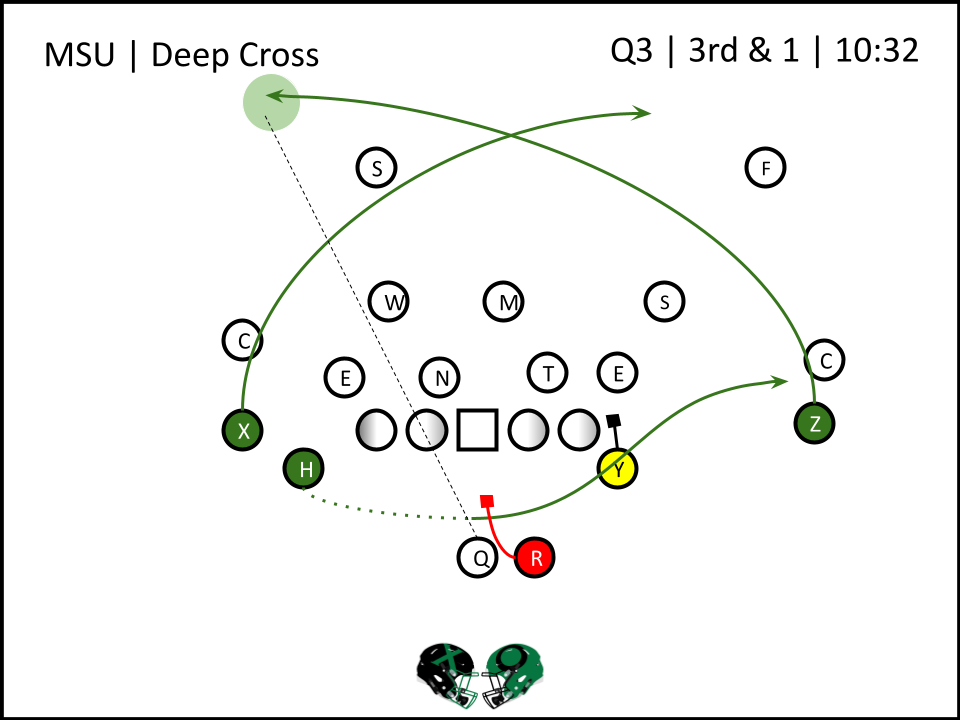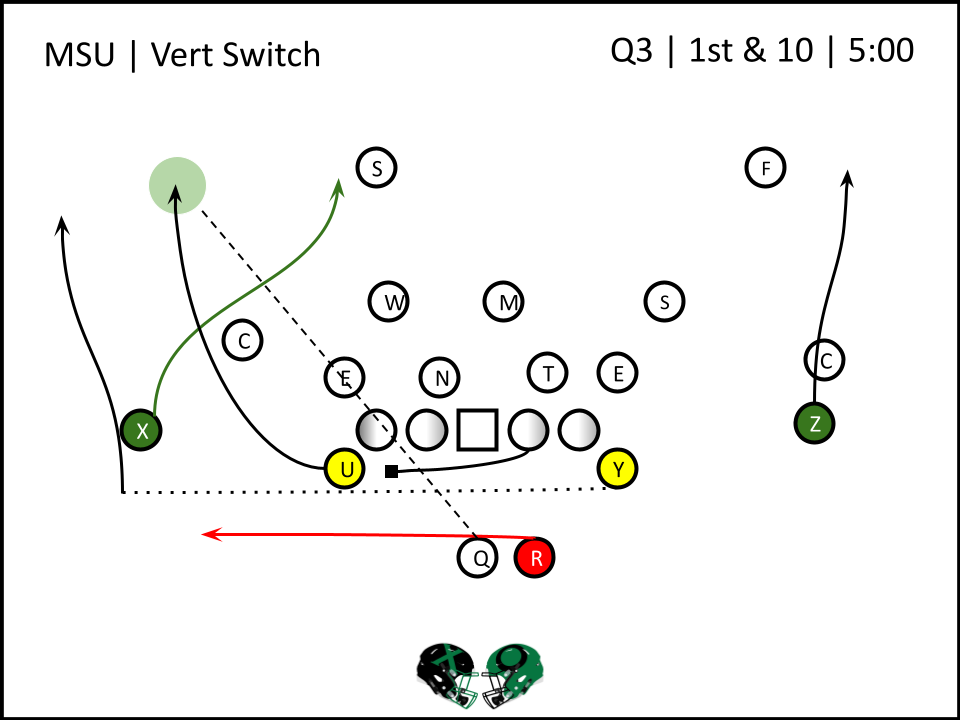How Montana State’s Explosive Plays Sparked a Second-Half Comeback in the FCS Championship
In last Monday night’s FCS National Championship, Montana State’s typically high-powered offense struggled to find its rhythm in the first half against a stout North Dakota State defense. But in the second half, the Bobcats came alive, dialing up explosive plays that clawed them back into the game, cutting the lead to just three points on two separate occasions. Let’s break down some of those second-half fireworks from the Bobcat offense and see what sparked their resurgence.
Related Content: FCS National Championship Preview
Montana State’s first explosive play came on a well-executed 4-vertical concept against Cover 3. The Bison had leaned heavily on single-high safety looks on early downs to stifle the Bobcats’ quarterback-run game. Recognizing this tendency, Montana State adjusted coming out of halftime, attacking the vulnerable seams in Cover 3 for a big gain.
Later in the same drive, Montana State struck again, exploiting Cover 3 with what I call a “Deep Mesh” concept—a pair of deep crossing routes run by the X and Z receivers. North Dakota State’s defense failed to properly exchange the crossers, leaving one receiver wide open for a massive gain that brought the Bobcats to the 1-yard line. A few plays later, they capitalized, punching it in from the 2-yard line to finish the drive.
Montana State’s next explosive play came from a creative variation of a 4-vertical concept, utilizing a vertical switch between the flexed tight end and the slot receiver. This alignment created three vertical routes attacking one side of the field, a design that has gained popularity due to its ability to delay one route and disrupt coverage rules in the secondary. Against North Dakota State’s Cover 2, the deep half safety worked inside to cover the vertical route, leaving tight end #87 wide open on his seam route. NFL defenses running the Fangio system have addressed this issue by rotating the opposite safety over to “poach” #3, allowing the play-side deep half safety to handle #2 vertical.
One play later, the Bobcats dialed up a chase concept to find the end zone. The “Y” ran an in-breaking route that pulled the interior “choked” Sam linebacker on the drag, while the running back’s outside release drew the next interior backer. This cleared the middle of the field, isolating the wing tight end on the cornerback. With the corner playing outside leverage, the wing took advantage by stemming outside before breaking inside, creating separation for an easy pitch-and-catch touchdown.
Montana State followed up with a successful 2-point conversion, albeit on what appeared to be a broken play. The Bobcats’ quarterback turned the wrong way on the play fake but quickly recovered, delivering a perfectly placed ball to the tight end on a well-timed delay route. Despite the mishap, it was a great play call and execution by the Bobcats to extend their momentum.
With 12 minutes left in the 4th quarter, Tommy Mellott finally broke loose for a massive run, showcasing the Bobcats’ signature play, outside zone. Montana State often tags a “smash” style RPO to the play’s pull side for the quarterback. This time, North Dakota State’s defense got caught overcommitting to the RPO, allowing Mellott to keep the ball and burst through for a huge touchdown run.
On their final explosive play of the night, the Bobcats connected for a touchdown on a slot fade. The timing couldn’t have been better, as North Dakota State rotated into a Buzz Cover 3 after showing Cover 2 on the previous two plays. Regardless of the defensive look, the Bobcats executed perfectly, cutting the lead to just three points with another well-designed play.
Although Montana State struggled in the first half, it was their passing game that ignited the offense after halftime. Through creative concepts and timely play calling, the Bobcats mounted a furious comeback that came tantalizingly close, ultimately falling just three points short. Despite the loss, the FCS Championship game was a thrilling watch and easily one of the best matchups of this football season.







That switch 4 vert did look like NDSU was in some type of 3x1 check (Poach/Solo/etc)I think the FS just got crossed up and followed the final #3 too long instead of trusting his BS to take him. The CB opposite the 3x1 looks to be locked on the backside rather than C2 which freed up the BS to help. Great break down, a lot of creative but simple plays that work well against the right coverages